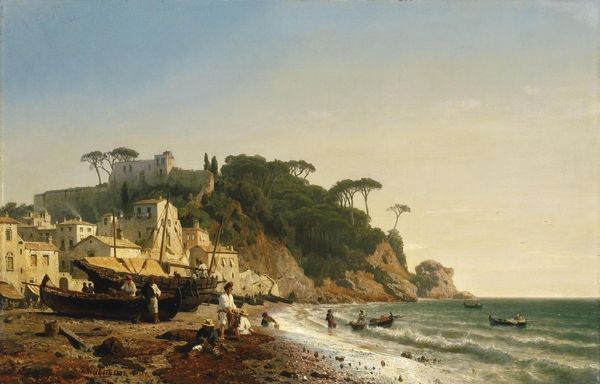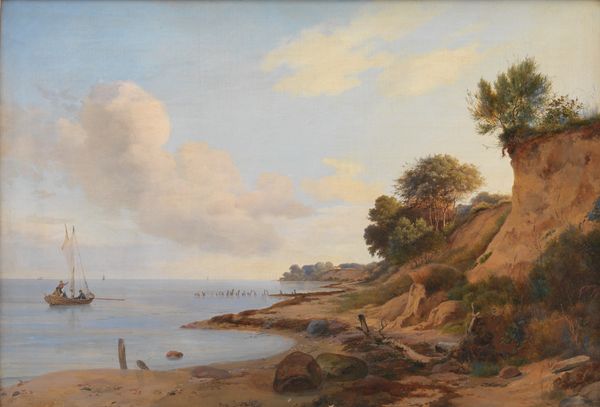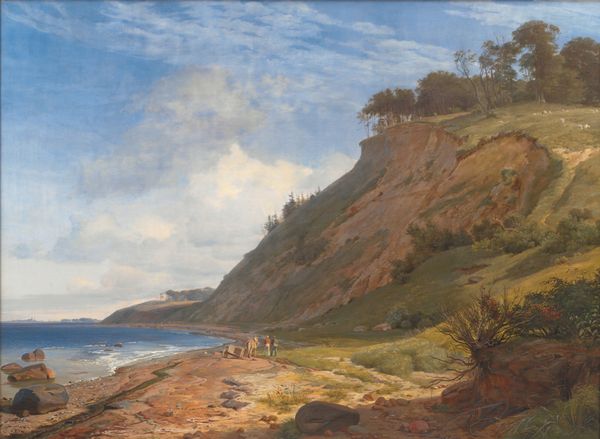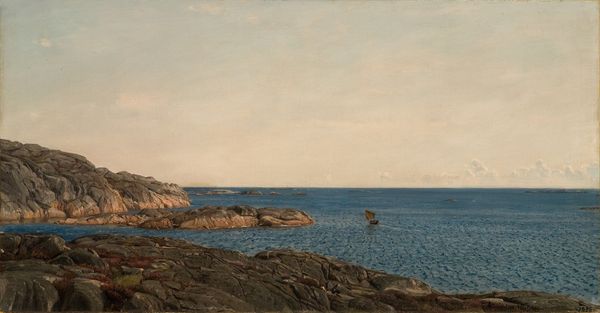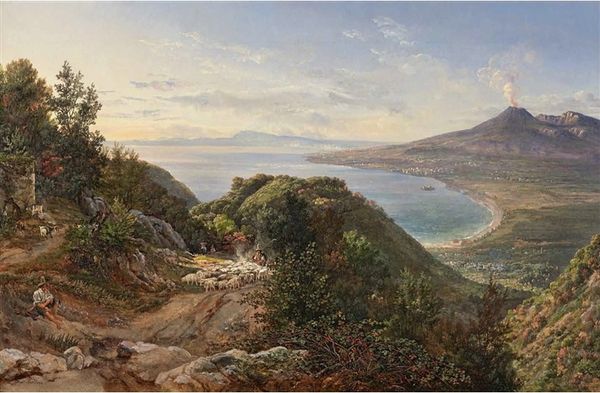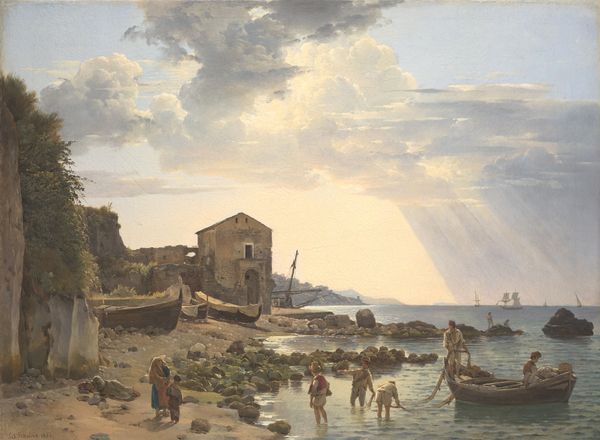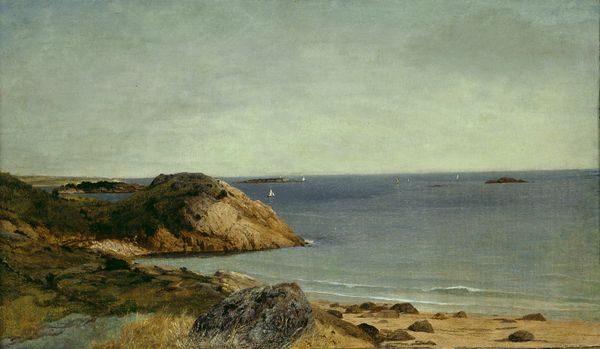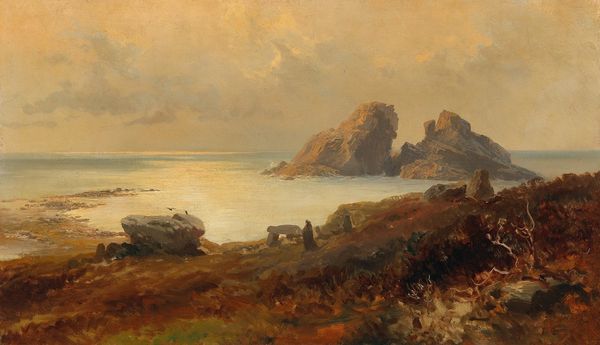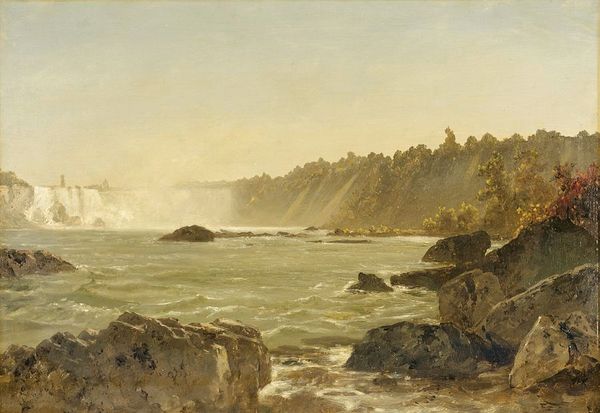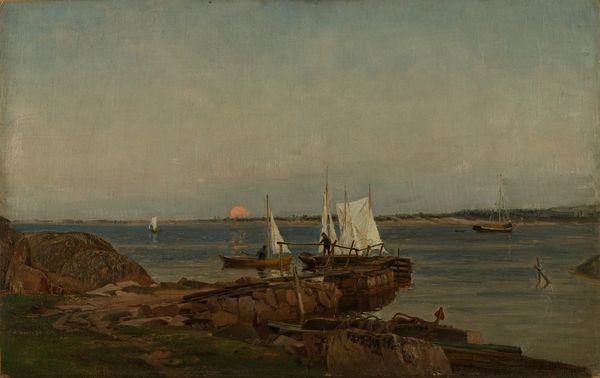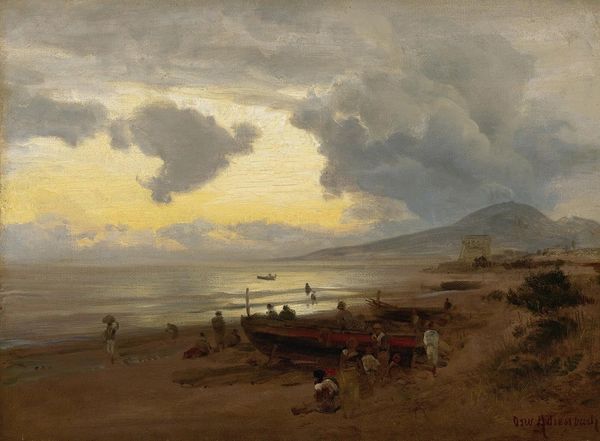
Copyright: Public domain
Editor: This is "Italian Coast Landscape," painted in 1851 by Andreas Achenbach using oil paint. There's a certain tranquility to this scene, a snapshot of everyday life on the coast, but the way the light hits the water is really striking. What do you see in this piece? Curator: What strikes me is the deliberate framing of leisure activities within this 'natural' scene. Consider the Romantic movement's fascination with untouched landscapes, which this painting superficially echoes. Yet, Achenbach subtly populates the vista with markers of social hierarchy: observe the figures seemingly observing from the cliff. Who were paintings of this time made for, and who do they actually picture? Editor: That's interesting. I hadn't really considered the power dynamics at play. So, it's less about pure observation of nature, and more about societal values influencing artistic choices? Curator: Precisely. Achenbach, while adhering to realist techniques, presents a carefully constructed social reality. He frames a view – in multiple ways, visually and politically - where leisure becomes a signifier of class and, perhaps, of imperial power exerted from a distance. The ‘Italianness’ is itself a sign, marking this art for certain (not Italian) buyers. How might the landscape itself be an object for colonial viewing? Editor: That really makes you think about how we perceive these "peaceful" landscape paintings. So many layers! I never would have seen that without this conversation. Thanks! Curator: Indeed. Art opens up as soon as we see not just the scene, but also the systems in play.
Comments
No comments
Be the first to comment and join the conversation on the ultimate creative platform.
